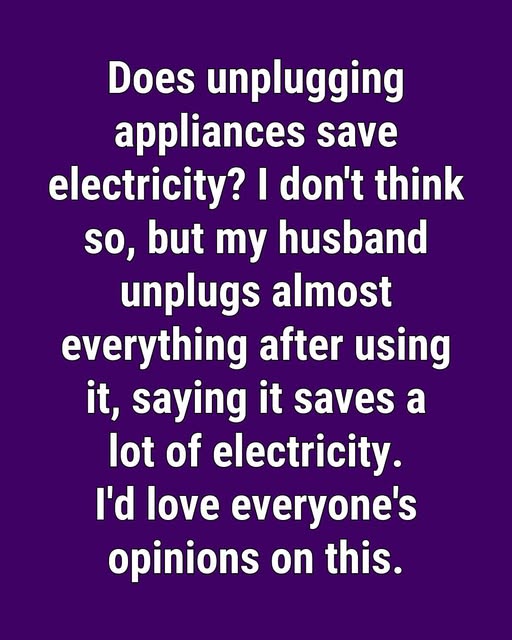We live in a world overflowing with electronics — phones, tablets, smart TVs, gaming consoles, kitchen appliances, chargers, lamps, speakers, and countless other gadgets, all quietly competing for one precious resource: a spot in the power outlet. Every corner of our home hums with devices designed to make life easier, faster, and more convenient. But amid all this technology, an important question often gets overlooked: Do these appliances continue to use electricity even when we’re not actively using them?
Most people assume that flipping the switch off means cutting off all power. It feels logical — if the device is off, it shouldn’t be costing you anything, right? But the reality is a bit more surprising, and understanding it might be the key to lowering your monthly electricity bill. So let’s take a deeper look at that classic question so many homeowners have asked: Does unplugging appliances actually save electricity?
The quick, simple answer is yes — it does.
But the fuller explanation involves a little more detail, a bit of energy science, and a closer look at how our everyday devices behave behind the scenes.
Imagine this: your dependable coffee maker sitting quietly on the kitchen counter. Maybe it has a little display screen or a tiny internal clock. Maybe it’s just waiting patiently for tomorrow morning’s brew. While you’re asleep and completely unaware, that innocent-looking appliance is still pulling small amounts of power from the outlet. This invisible, ongoing energy drain has a name: standby power, often called vampire power because it behaves exactly like a vampire — silently sucking electricity even when the device is “off.”
And your coffee maker isn’t alone. Many modern electronics are designed to stay half-awake. TVs remain ready to receive remote-control signals, chargers draw power even when nothing is connected, microwaves keep their digital clocks glowing, and gaming consoles rest in low-power mode waiting for the next session. All of this adds up.
So how much can you actually save by embracing the simple habit of unplugging? Surprisingly, standby power can account for up to 10% of a household’s total energy consumption. That may not sound catastrophic at first, but think about it in terms of your annual bill — that’s real money you’re losing for electricity you never consciously used. And it’s also electricity that doesn’t need to be wasted.
But does this mean you need to run around your home like a movie character pulling every plug out of every socket each time you finish using something? Not at all. While it’s true that many appliances sip electricity while plugged in, not all of them are guilty in the same way. Essential appliances like refrigerators, freezers, and sometimes washing machines must remain plugged in to function properly. Unplugging them would lead to melted food disasters or laundry chaos — and no one needs that kind of stress.
On the other hand, there are plenty of smaller gadgets that spend most of their time doing absolutely nothing. Phone chargers that stay plugged in all day, toasters that only get used in the morning, countertop appliances that come alive once a week, TVs that remain idle for hours, and gaming consoles that rest more than they run — these are the true energy vampires worth focusing on. Unplugging them when they’re not actively being used is an incredibly simple step that genuinely reduces your electricity usage and helps shrink your monthly bill.
Now, what about people who try unplugging everything at night? Is it worth the time and effort? Well, that depends entirely on your habits and lifestyle. If you’re someone who leaves small devices plugged in throughout the entire house, then unplugging overnight can become a powerful routine. But if the idea of crawling behind furniture every evening sounds exhausting, there are smarter options — like using power strips, smart plugs, or unplugging only the devices you rarely use.
The importance of unplugging goes beyond saving a few dollars. It also plays a role in home safety. Leaving certain appliances plugged in indefinitely, especially older ones or devices with worn-out wiring, can create electrical risks. Faulty circuits, power surges, and internal malfunctions can lead to overheating or potential fire hazards. Unplugging appliances when they’re not in use acts as a simple preventative measure — a small step that significantly reduces the risk of electrical accidents.
In the end, the act of unplugging appliances truly does save electricity and helps you lower your overall energy consumption. While you don’t need to disconnect every large appliance in your home, targeting the devices that quietly drain power in the background can make a noticeable difference. Add the bonus of improved safety, and it becomes a win-win situation.
So the next time you leave a room, finish watching TV, or call it a night, think about which devices can take a little break too. Give them the chance to enjoy a proper “power nap” by pulling the plug. Your wallet, your home, and the planet will all thank you.
